History of the Air Force and Air Defense of Yugoslavia. Part of 1. Start (1912-1941)
The first steps toward creating an air force were made in 1909, when Serbia bought two balloons. In 1910, foreign pilots performed flights in Serbia - the first was the Czech pilot Rudolf Simon. A month after Simon, Russian Boris Maslennikov arrived in Serbia, who at the end of 1910 - the beginning of 1911. completed several flights on his Farman IV biplane, both independently and with passengers. Serbian King Petar I Karadjordjevic awarded Maslennikov with the Order of St. Sava.
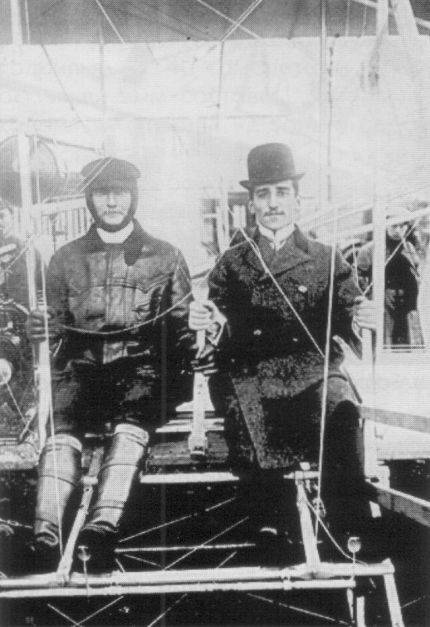
In 1912, six Serbian officers and subofficers were sent to study at the Etampes school near Paris. The first of them performed an independent flight on July 23, 1912, the successor Mikhaylo Petrovich, he was awarded the diploma of pilot No. 979 aviation Federation (FAI).
Serbian aviators did not have to wait long for baptism by fire - Serbian lands should be freed from Turkish invaders. The pilots recalled 30 in September 1912, and in preparation for the 1 Balkan war in France, eight aircraft were purchased (three Henry Farman HF.20, three BlerioVI / VI-2, two Deperdissin Type T), and two REP aircraft (Robert Esnault-Pelterie Type F 1912), supplied by France to the Turkish army, was requisitioned. Serbian War Minister Radomir Putnik, by order of 24 December 1912, formed an aeronautical team, which included aeronautic and aircraft compartments. In addition to the Serbian pilots, three French and two Russians from France and Russia arrived in Serbia.
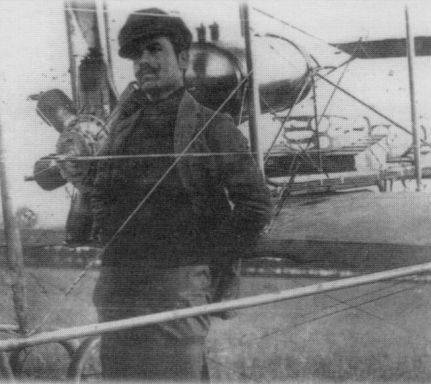
In January, the Russian newspaper Novoye Vremya 1913 bought one Farman VII plane with its own money, donated it to the Serbian army and sent the Russian pilot Kirshtayan with it. In the operation to liberate Shkodra, Montenegrin troops were assisted by airplanes of the Serbian "coastal squadron". Three Serbian aircraft took part in the Second Balkan War, making reconnaissance positions of the Bulgarian troops.
However, by the beginning of the First World War, Serbian aircraft had only 7 worn out aircraft. The main allies of Serbia, France and Russia, initially did not want to supply Serbia with aircraft, giving priority to supplying their own armies. In the first nine months of the war, the French refused to give Serbia 12 ordered aircraft, although the Serbs had already paid for their construction. Tsarist Russia did not provide aircraft, but approved a loan in the amount of 6 million rubles for Serbia’s purchase of aircraft in other countries.
Nevertheless, important for the Serbian army information in the battle at Cera gave the crew of the Serbian aircraft "Blerio". In August and December, 1914 managed to capture several Austro-Hungarian Lohner BI BUB aircraft, which made forced landings as a result of damage sustained by artillery fire. The first air battle took place on 27 August 1914. Then one armed Austrian plane attacked an unarmed Serbian airplane, but its pilot Miodrag Tomic managed to escape from the enemy. Finally, after months of 9, the French government sent its squadron MF-93 from 12 of the Farman MF to Serbia. 11 (5 of them was later donated to the Serbian army) and roughly 100 servicemen. The first Serbian aviation school was created in 1915, but the difficult martial law in which Serbia found itself hampered its further work. France handed over two no longer new aircraft "Blerio" XI, which in Serbia received their own names "Oluy" and "Vyhor" (storm and whirlwind). “Oluy” was the first Serbian combat aircraft - the Schwarclose M.08 machine gun was installed on it.
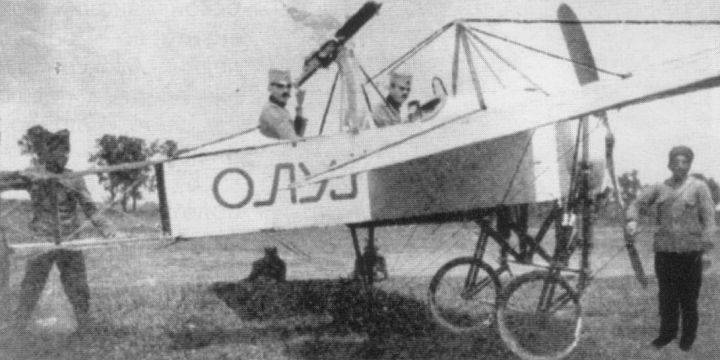
One Turkish Blerio and one Austro-Hungarian Aviatik became the trophies of the Serbs in 1915. 2 August 1915 The Serbs made their first bombing flight. The crew dropped small bombs and arrows on the column of enemy troops. Two balloons built by the Triangle company and seven artillery batteries were received from Russia, including one anti-aircraft gun with 76 mm caliber guns. This battery marked the beginning of the Serbian air defense, 15 August 1915, knocking down an Austro-Hungarian airplane; until the end of the war, the battery hit two more enemy aircraft. At the same time, several field guns were adapted for firing at aerial targets. Due to the dramatic deterioration of the situation in the Balkan theater of military operations at the end of 1915, the king decided to withdraw troops from the territory of Serbia. After the withdrawal of the Serbian army through Montenegro and Albania to Greece on the island of Corfu, a new air squadron was formed there.
In May, Serbian pilots began flying 1916 as part of five Serbian-French squadrons under Thessaloniki. The squadron was commanded by a French major; the main task was to support the Serbian ground forces. The period of the revival of the Serbian army was used to train a new generation of pilots, technicians and cadets.
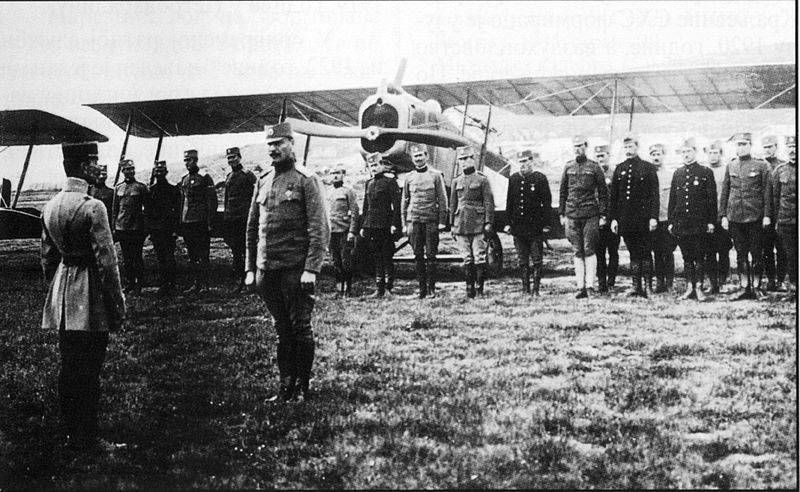
The Serbian pilots won their first air combat victory on 2 on April 1917 on the Newport plane. On the eve of the front breakthrough, the Serbian army had two squadrons with 40 aircraft and Serbian personnel, although not only Serbs served in the squadrons (in particular, there were 12 Russians). Soon a large number of Russians joined the Serbian army, disappointed with the situation in their own homeland. They were sworn in to the King of Serbia, who did not contradict the oath given earlier to serve "for the faith, the king and the Fatherland." The Russians were allowed to continue wearing the military uniform of the Russian Empire. At the beginning of 1918, after the completion of training, 12 Russian pilots and cadets arrived from France. One of the most successful combat missions of the Russian pilots was the 26 flight of September 1918 on the attack of the column of the Bulgarian infantry. One of the pilots was wounded, but the task was completed in full.
Knowing about the threat of death in his homeland, the King of Serbia offered the Russians to remain in the Serbian army, but many chose to return to Russia, to Denikin. Later, some of them returned to Serbia.
Until the end of the war, more than 3000 sorties were flown. The pilots shot down 30 enemy aircraft, artillery - five more. The commander of the first Serbian aviation squadron later became the first commander of the aviation of the united state of southern Slavs.
With the formation of the kingdom of Serbs, Slovenes and Croats after the war, the backbone of the air force of the new state was these forces, in addition to which people were recruited from other parts of the newly formed kingdom as well. The material part for the most part consisted of captured Austro-Hungarian cars. At the beginning of 1919, the Air Force Command was formed in Novi Sad, and it was there that one squadron and a pilot school were located. One squadron was deployed in Sarajevo, Zagreb and Skopje and one link each in Mostar and Ljubljana.
In the same year, 1919 air districts were established, based in Sarajevo, Skopje, Zagreb and Novi Sad. The following year, an aviation department was created under the Ministry of War. The aviation district in Novi Sad was renamed 4-e aviation command with a fighter squadron, intelligence school, school for reserve officers (student training), and aviation district in Mostar in 1-e aviation command standing out of the pilot school. In addition to this, the 2 and 1 air command were attached to army squadrons.
From 1922, the Air Force was divided into aviation (reconnaissance, fighter and bomber aircraft) and aeronautical (balloons) components.
In 1927, the air command was created at the location of the army districts. Then from the 1-th and 2-th air command and regional air command were formed regiments of a mixed composition in the 2-3 air groups. In 1930, the regiments were consolidated into air brigades in the 2-3 regiment. In 1937, there was a division into flight and non-flight units with the creation of air bases responsible for logistical support. Thus, the aviation bases of 1 rank for servicing the aviation regiment, 2 or 3 rank for servicing aviation groups or special squadrons appeared.
In 1923, the decision was made about the need to upgrade JKRV. The biplanes of the First World War had to be replaced by modern aircraft. A lot of Yugoslav and international companies were connected to the modernization, which allowed in a short time to significantly increase the number of aircraft and the number of flight crews. And both planes and licenses for their production were purchased.
The first fighter of the Yugoslav assembly was the French fighter Dewoitine D.1. 79 aircraft were delivered to Yugoslavia in 20-ies, and since 1927, their licensed production was established at the Zmaj factory in Zemun, which also produced training aircraft of Gourdou-Leseurre and Hanriot firms under French license.
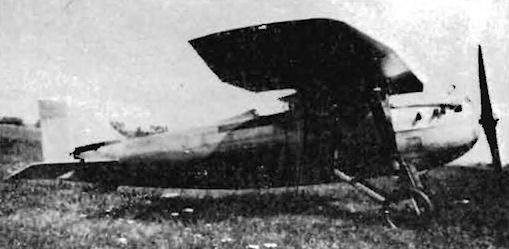
In 1930, the Yugoslavs bought three Czechoslovak Avia BH-33E-SH fighters. A little later, the Ikarus plant in Zemun acquired the rights to manufacture it and built 42 machines. They entered service with the Yugoslav Air Force. Some of the BH-33E survived until the Germans attacked Yugoslavia in 1941.
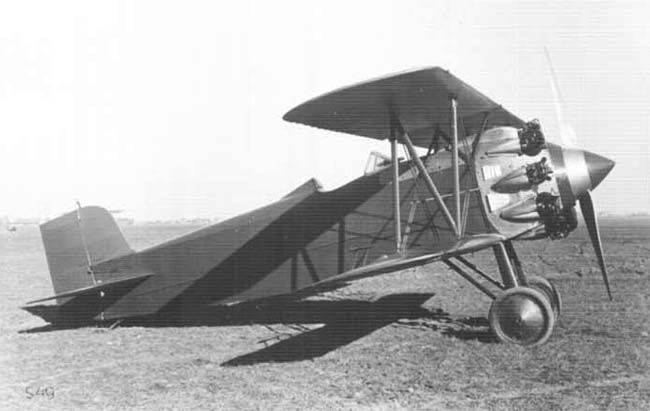
Zmai also produced Gourdou-Leseurre B.3 fighter jets (assembled 20 fighters used for pilot training) and Dewoitine D.27 (assembled 4 fighter jets, from France supplied 20).
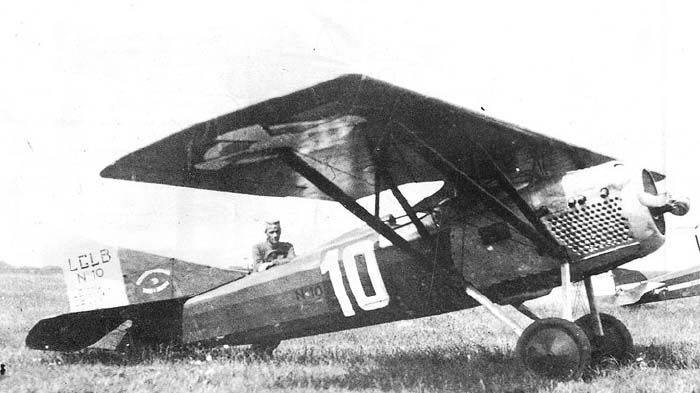
The French Breguet 19 became the main light reconnaissance bomber of the Yugoslav Air Force in the pre-war years. The first 19 aircraft were purchased in France in 1924 year. Another 152 aircraft was received in 1927 year. In 1928, licensed production began at a specially built state aviation plant in Kraljevo. A total of 1932 Breguet 425 were released in total before 1, of which 119 airplanes had Lorren-Dietrich engines with 400 and 450 hp, 93- "Hispano Suiza" with 500 hp, 114- Gnome- Ron "9Ab, power 420 hp, who made under license in Yugoslavia itself at the plant in Rakovica. It was built 51 aircraft Breguet 19-7 with the engine Hispano Suiza, hp power 650. , but the engines for them were received irregularly, and as a result, about 50 finished machines were left without engines at all. Then the Yugoslavs decided to try to modernize Br.19 on their own. A group of designers from the factory in Kraljevo remade Br.19.7 under the American Wright engine GR-1820-F56 Cyclone, hp 775, under the designation Br.19.8. Gliders taken from conservation were delivered to the Ikarus plant in Zemun, where 48 machines were equipped with American engines. The first of them rose into the air in December 1936, the latter surrendered to the military in November next year. We can safely say that in the second half of the 1920-s Breguet 19 belonged to the best aircraft of its time. However, time takes its toll, and for 1938-40 years, the Yugoslavs wrote off or transferred to flight schools near the Breguet 150, mostly early modifications. However, in April 1941, when German, Hungarian and Bulgarian troops invaded the country, eight squadrons still flew these machines. Most of the park was Br.19.7 and Br.19.8, but there were some early modifications.
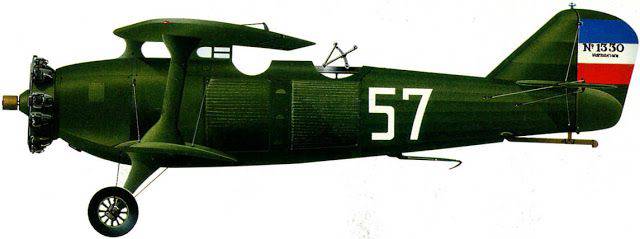
Along with the Breguet 19, the Yugoslav Air Force was armed with another famous French light reconnaissance bomber Potez 25 with the Gnome-Rhon engine 9Ac Jupiter (420 hp), which was also licensed by the Yugoslav company Ikarus, which had Brasov was assembled around 200 machines. As of 6 on April 1941, the Yugoslav Air Force still had 48 Potez 25.
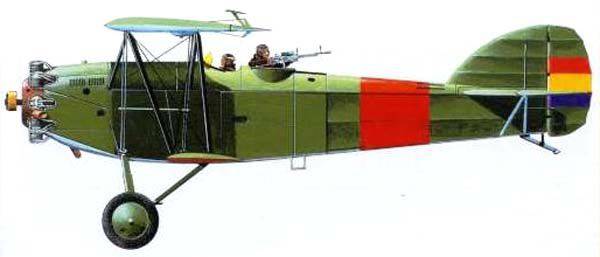
Under license from the English company HG Hawker Engineering Co. Ltd by the Ikarus plants in Belgrade and Zmay in Zemun in 1937-1938. Fury 40 fighters were assembled as the main Yugoslav fighters in the 30s.
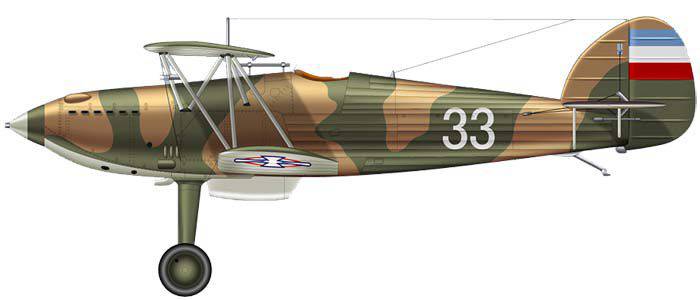
Simultaneously with the purchase of foreign aircraft was the design of its own. The first proper Yugoslav aircraft was the training Fizir FN, which was designed in 1929 by designer Rudolf Fizir. Serial production of the aircraft was adjusted at once in several factories of different enterprises. The prototype was flown in 1930 and almost immediately the Yugoslav Air Force made an order for several dozen planes, intending to use them as close reconnaissance aircraft. The first batch of 20 aircraft, equipped with Walter engines, collected at the factory Zmaj. They were followed by 10 cars with Mercedes engines, and in total in 1931 — 1939. 170 aircraft of the order were released, many of which were transferred to aviation schools. 20 machines were also assembled in 1940. Individual copies continued to fly until the beginning of the 1950s.
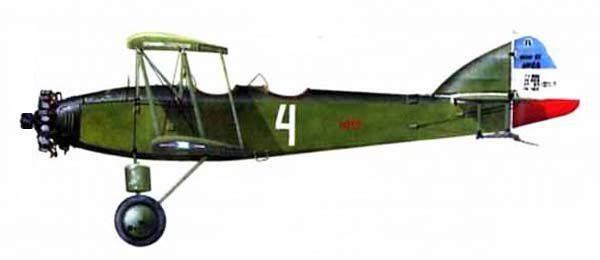
A further development of the Fizir FN was a modified version of the FP2. Production of this aircraft began in the year 1934. For quite a long time, he remained the main training aircraft of the Yugoslav Air Force. Before the end of the war, 7 FP2 survived, which were in operation until the complete write-off in 1947.
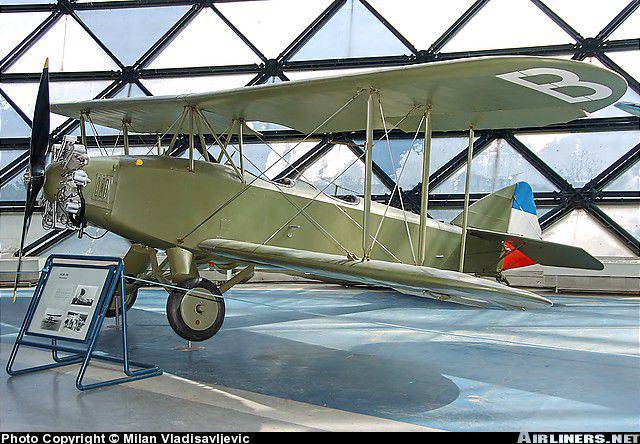
Since 1934, Prva Srpska Fabrika Aeroplana Živojin Rogožarski has built a training aircraft Rogozarski PVT, which has received recognition for excellent handling and excellent maneuverability. The PVT aircraft were supplied to the flight schools of military aircraft of Yugoslavia in large quantities, all the Yugoslav fighter pilots were trained there. Information on the number of PVTs built is not available, but at the time of the German invasion in April 1941, the Yugoslav Air Force had 57 with such aircraft. The success of the PVT attracted the attention of the Navy of Yugoslavia, which equipped one aircraft with light metal floats. After successful testing of this version with a float landing gear, a series of hydroplanes PVT-H (H from Hidro) was ordered. Warplanes that survived the war were used in the Air Force of socialist Yugoslavia until the 1950s.
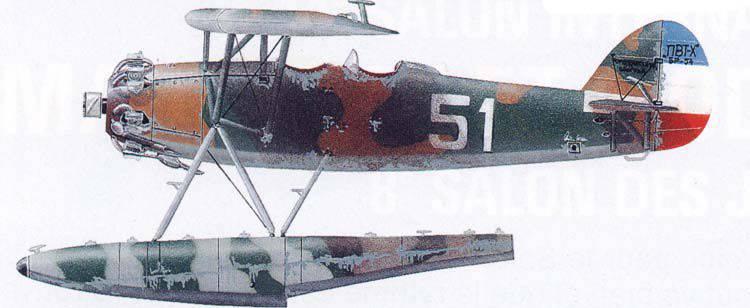
A further development of the PVT aircraft with a large number of metal parts in the structure and, in general, improved contours, was the Rogozarski P-100 aircraft, which retained the same Gnome-Rhone K7 Titan Major engine; The stabilizer was redesigned, and a wheel was installed instead of a tail crutch. By 1941 g. 27 copies were used to improve flight skills and teach aerobatics. The wing span was reduced compared to the PVT model, and the maximum speed increased to 251 km / h.
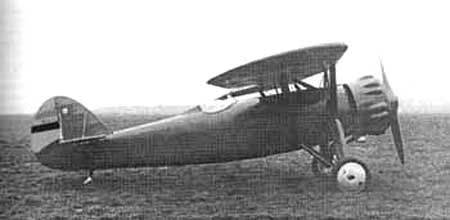
In 1934, the Yugoslav company Prva Srpska Fabrika Aviona Zivojin Rogozarski built the training plane Rogozarski SIM-X. It had a fuselage of circular cross-section, a parasol-type strut-wing and a wide-gauge, non-retractable undercarriage with separate racks. The aircraft was equipped with a Walter star engine. A significant number of these models were built. During the German invasion of Yugoslavia, around 20 machines were in operation at three flight schools.

At the end of the 30-ies, a SIM-XII-H training seaplane, equipped with two floats and a Walter Major Six engine rated at 190 l, was designed at the SIM-X company. with. (142 kW). The motor of greater power allowed to increase the size of the aircraft. The SIM-XII-H fuselage had an elliptical cross section, and the tail assembly was also strengthened.
The prototype made the first flight in February of 1938, in 1939, they built 8 serial hydroplanes, the last four aircraft made it possible to train pilots using instruments. The remaining four aircraft were delivered without floats, as there were difficulties in their delivery from Canada. An attempt was made to develop such floats on its own, but the project could not be implemented due to the start of the war.
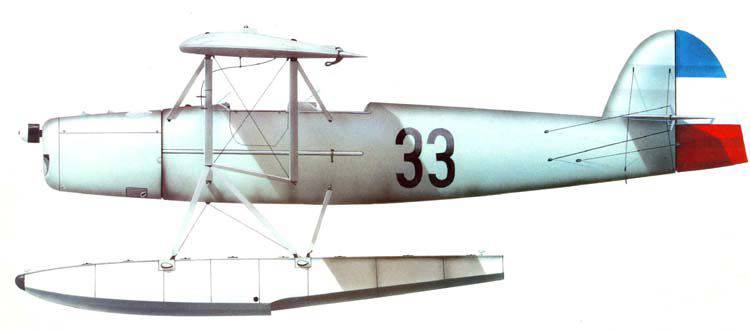
In 1936, the Yugoslav Air Force Command expressed interest in a new training aircraft to train fighter aviation pilots. For these purposes, a project was developed which received the designation SIM-XI, which was specially equipped for completing complicated aerobatic maneuvers with an additional carburetor (for flying in an inverted position). Before the beginning of World War II, mass production was never begun. A single copy of the aircraft was captured by the Germans and handed over to their allies - the Croats, who used it mainly for towing gliders. 19 December 1943 of the year SIM-XI with a tail number 7351 was shot down by partisans.
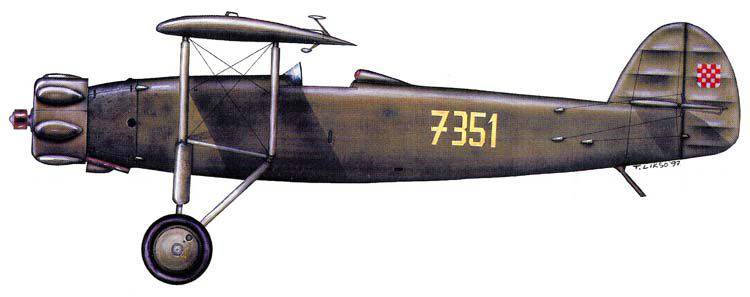
In 1931 — 1935, the Ikarus company created the IK-2 fighter, which became the first Yugoslav fighter of its own design. Serial production of the aircraft was launched in the 1937 year, but was limited to a pre-production batch of 12 machines. Equipped with a Hispano-Suiza 12 Ycrs engine with a power of 860 l. pp., the IK-2 developed a maximum speed of 438 km / h and was armed with an 20-mm cannon HS-404 and two 7.92-mm Darne machine guns. The creation of this fighter was the undoubted success of the Yugoslav aviation industry.
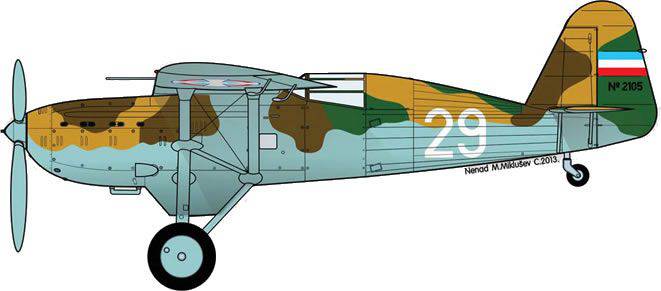
Up until 1939, new flight schools were constantly opened, where both pilots and engineers, electricians and mechanics who built and serviced aircraft studied. During the training of pilots, which, by the way, not so much was prepared, the emphasis was on personal aerobatic skills. Less attention was paid to tactics and actions in battle formation, since it was fairly assumed that whoever became their adversary in a real war, numerical superiority would be on the side of the enemy, and only the personal skills of the pilots could give them a chance to win. The theoretical training of officers remained for the winter period.
1 September 1939 began the Second World War, and the Yugoslav government decided to strengthen its air force.
Back in January 1938, the Yugoslav Prime Minister Stoyadinovic arrived in Germany with the aim of purchasing modern weapons. The military attache of Yugoslavia in Berlin expressed his admiration for the characteristics of the latest German fighter Bf-109 and, when Prime Minister Stojadinovic met with Reich Minister Hermann Goering to discuss Yugoslav military purchases, Bf-109 was a priority on the list. Goering tried to dissuade Stoyadinovich, stressing that this plane would be too complicated for the Yugoslav pilots, in fact, simply not wanting to part with scarce fighters, but the steel, chrome and copper, with which Yugoslavia was paying for the purchases that were urgently needed by the German industry, made their The deal, and 5 on April 1939, was contracted to supply the 50 aircraft Bf-109E and 25 engines to the 601 DB. The engines were delivered through 11 weeks, 23 June, and in early autumn, the first 3 fighter Bf-109E-3 flew from Augsburg to Zemun to become part of the 6 th Fighter Regiment of the Air Force of the Kingdom of Yugoslavia. Additionally, an agreement was concluded on the supply of another 50 aircraft Bf-109. Part of the aircraft was lost in accidents, part transferred to flight schools. As a result, the fighter of Messerschmitt Bf-2E (according to other data, 6) entered the 61 th and 109 th air regiments in the Air Force of Yugoslavia. The Yugoslav Messerschmitts were somewhat modernized, so the 80 weighed more kilograms than their German "colleagues."
In the same year, 1938 signed an agreement with HG Hawker Engineering Co. to replace the outdated Hawker Fury fighter. Ltd about licensed production of the latest for that time fighter-monoplanes Hurricane. In accordance with the agreement, Hawker supplied 12 Hurricanes I and authorized their production at the Rogozharsky and Zmay plants. The first aircraft purchased arrived 15 December 1938 g. It was a fighter with a wooden propeller and wings covered with canvas. The same were going to build in Yugoslavia. The development of production was delayed, and the Yugoslav Air Force bought another 12 machines in England. They already had new Merlin IV engines, variable pitch propellers and metal wing trim. By the time the Germans attacked Yugoslavia, 60 ordered to manufacture Zmay 20, and Rogozharsky 40 - not one. Thus, in the ranks of the Yugoslav Air Force 6 April was 38 "Hurricane", which were in service with 51-th, 33-th and 34-th squadrons. In Yugoslavia, one "Hurricane" was re-equipped under the German engine DB601A. This machine has been tested since the beginning of 1941, and, according to pilots, exceeded the standard; her fate is unknown.
In turn, the Yugoslav designers proposed their fighter, Ikarus IK-3. The Yugoslav fighter proved to be so reliable and easy to control that it excelled its outstanding contemporaries: the British Hawker Hurricane and the German Messerschmitt 109. The aircraft was equipped with the French Hispano-Suiza 12Y-29 engine, horsepower 890 power, which allowed it to reach speeds of 526 km / h. Armed with an Oerlikon FF / SMK M.20 EM 39 cannon that fired through a screw hub and two Browning FN 7,92-mm machine guns under the hood in the front upper part of the fuselage. The aircraft was equipped with a German radio station Telefunken Fug VII. Unfortunately, all 13-like machines were released, of which, by April 1941, 12 had arrived at the line-up.
It was decided to strengthen the bomber aircraft.
In 1936-1937, Yugoslavia purchased the 37 Do 17 K, an export version of the German bomber Dornier Do.17 with French 14-cylinder star-shaped two-row air-cooled Gnome-Rhone 14N1 / 2 air-cooled engines, 980 X. At the same time, the Yugoslav government was negotiating with Dornier to purchase a license for Do 17, and 15 in May 1939, the assembly lines of state-owned aircraft manufacturing plants in Kraljevo began to produce Yugoslav Do 17K. Until April, the 1941 of the year, when the German invasion of Yugoslavia began, only the 30 Do 17K were fully assembled. All Yugoslav Do 17 K, unlike the serial German Do 17, had an elongated nose. Bombers Do 17 K in 1939 year entered service 3-th air regiment of the Royal Air Force of Yugoslavia.

Two Bristol BLENHEIM Mk I English bomber delivered to Yugoslavia became the benchmark for the Blenheim 48, built under license from the Ikarus factory in Belgrade. These machines, along with the more modern "Blenheim" IV, arrived from the UK at the beginning of 22, were in service with the 1940-th Bomber Regiment and the 8-th separate Yugoslav Air Force group.
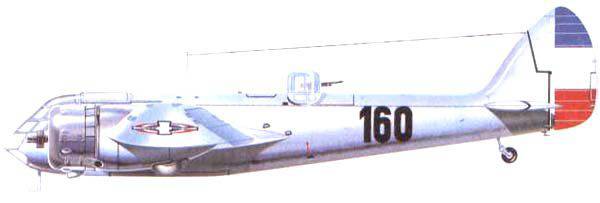
Despite the fact that Italy was an opponent of Yugoslavia, supporting the Croatian Ustasha, she also bought combat aircraft. In the middle of 1938, an agreement was signed on the sale of 45 medium bomber Savoia Marchetti S.M. 79 to Yugoslavia. All of them were of the standard Italian sample without any special features, and the delivery was swiftly carried out - just thirty S.79s were sent, who were heading to one of the regiments of the Italian Air Force, and supplied 15 new ones from the factory. In Yugoslavia, they armed one regiment (7-th - 30 machines) and 81-th separate bomber group (15 machines).
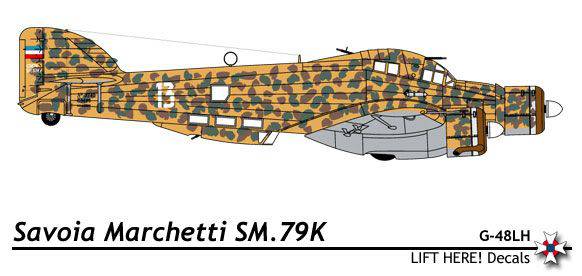
It was also purchased 12 light bomber reconnaissance Caproni Ca.310 LIBECCIO.
Yugoslav designers tried to create their own bombers. One of them was Ikarus ORKAN, first demonstrated at 1938 at the First International Aviation Exhibition in Belgrade. The Orkan was an all-metal monoplane with duralumin upholstery. The project was calculated under the 14-cylinder engines "Hispano-Suiza" 14AB (670 hp), of relatively small diameter. But after France entered the war, the supply of engines from this country stopped, then the Air Force management agreed to test the car with Italian 840-powerful Fiat A-74RC-38 engines of greater power, but at the same time of larger diameter. The Italian screws were adjustable pitch. The prototype, while unarmed, for the first time took off 24 June 1940 of the year. During landing, the aircraft was damaged, it was repaired for a long time; There was a particular shortage of French spare parts. Only 19 March 1941 was able to continue the test. There was not enough time to fine-tune the aircraft. The prototype Orkan was damaged during a German air raid, taken by the Germans as a trophy and taken by train to Germany, where its tracks are lost.
In 1923, hydroaviation was assigned and reassigned to the command of the Navy. In the same year, Ikarus started building flying boats in its workshops (Novi Sad). The first was a double biplane flying boat Ikarus SM with a Mercedes D.II motor rated at 100 l. with. . In the subsequent series on the boat installed Czech engines Blesk power 100 hp and German Mercedes D.II 120 and 160 HP The first flight of the flying boat took place on November 10 1924 of the year. The SM boat was produced in a limited edition for the Royal Navy of Yugoslavia. Total 42 produced boat copies. These unpretentious and comfortable cars were used for 18 years, up to April 1941.
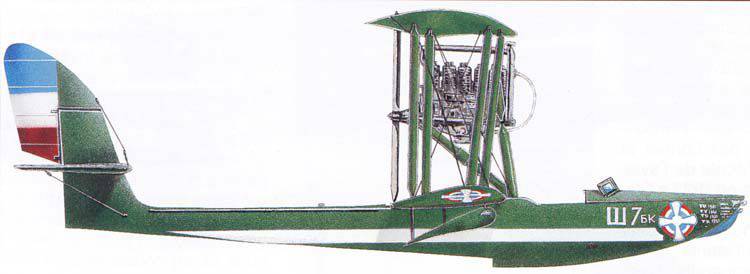
The next flying boat, Ikarus IM, did not go into the series. But on its basis created an improved version of Ikarus IO. It was a biplane with wings of unequal scope, but with a 12 hp Librerti L-400 engine. and the same crew location. In 1927 for reconnaissance purposes fleet built the first series of 12 cars. The IO flying boat was armed with one 7,7 mm machine gun on a ring mount in the bow of the hull. In total, 38 copies of four types were produced - IO / Li with a Librerti L-12 engine of 400 hp, (36 + 1 prototypes were built in 1927 and 1928), IO / Lo - with a Lorraine-Dietrich 12Eb engine of 450 hp ., (1 prototype in 1929), IO / Re - with Renault 12Ke 500 hp engine (1 prototype in 1937) and IO / Lo with Lorraine Dietrich-12dB 400 hp engine (20 copies in 1934).
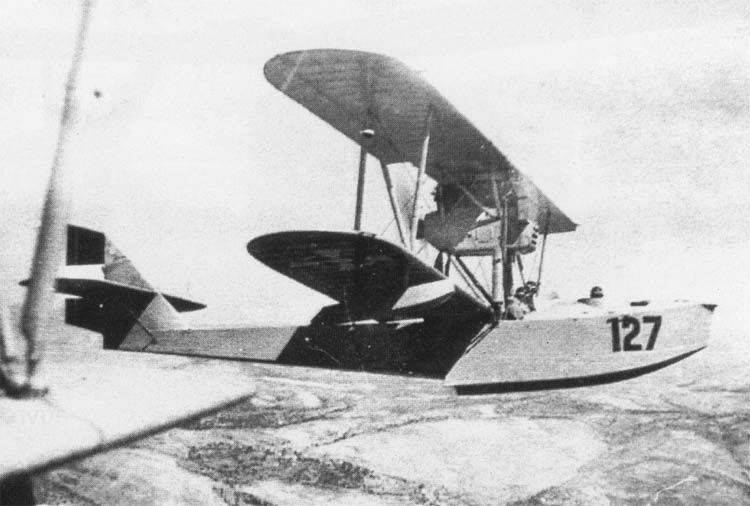
In addition to its own aircraft, naval aviation of Yugoslavia was equipped with foreign models - Dornier Do 22 torpedo bomber reconnaissance aircraft. A total of 1938 to 1939 year under the designation Do.22Кj 12 machines were delivered.
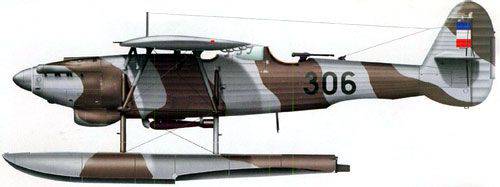
In 1940, the seaplane reconnaissance and light bomber Rogozarski SIM.XIV, a twin-engine monoplane with two floats, entered service. The prototype SIM-XIVH made its first 8 flight in February of 1938. It was the first Yugoslav twin-engine military aircraft of the same Yugoslav design. Mass production was launched at the beginning of 1940 at the Rogozharsky plant in Belgrade with final assembly in naval aviation workshops. Total released 13 ind.
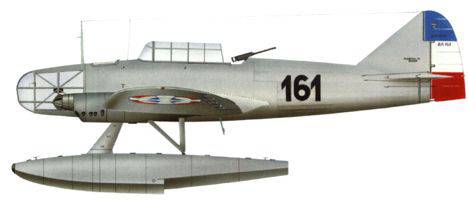
By 1941, the Yugoslav Royal Air Force had 1875 officers and 29 527 privates, as well as more 460 frontline aircraft, most of which were of modern types. The Air Force had 22 bomber and 19 fighter squadrons.
Of the old Breguet Br.19 and Potez 25 aircraft, 7 reconnaissance groups of the 2 squadron were formed, along the 1 group, into an army of ground forces. For the needs of the High Command, two separate reconnaissance groups were formed. Also 2 new fighter regiments were formed, armed with German fighters Messerschmitt Bf.109 and British Hawker Hurricane. The 1-I bomber brigade was formed from the 7-th and 4-th bomber regiments, and from the 1-brigade the 81-I separate bomber group was sent to Mostar.
Of the transport, light, medical and communications aircraft began to form auxiliary air force, but by the beginning of the war it was not completed. In Pancevo in the year 1940 founded the Air Force Academy.
The air defense organization of cities, garrisons and roads was completed at the beginning of 1940. Air defense was provided only troops. The weapon was modern, but it was not enough. The Air Force command had an 2 air defense division armed with X-NUMX-mm M-75 guns, and each army had an air-defense division equipped with an X-NUMX-mm M-37 or 75-mm M-37 cannon and a group of searchlights. Each division had a machine-gun company with 76,5 36-mm machine guns M-6 (Czechoslovak ZB-15).
The Yugoslavs counted on either preventing the invasion of the country or delaying the Luftwaffe until the Allies approached. Time has shown how futile these expectations were ...
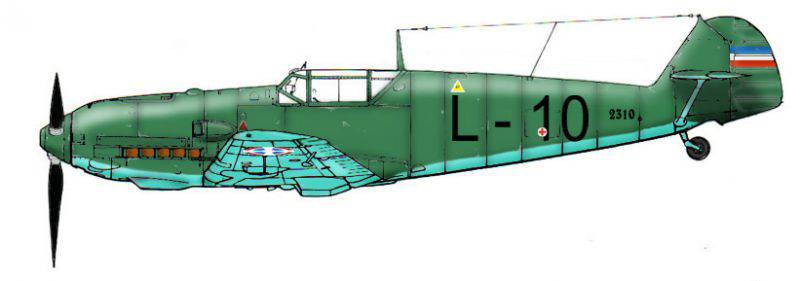

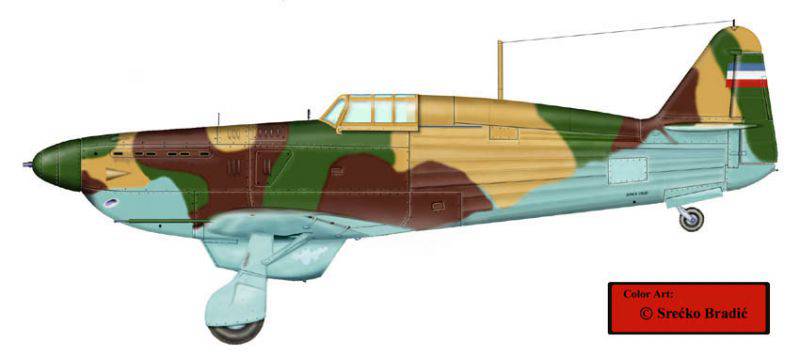
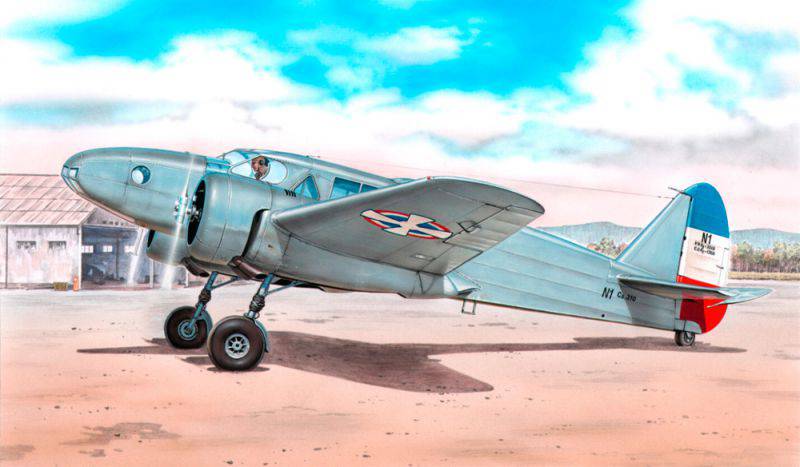

Information